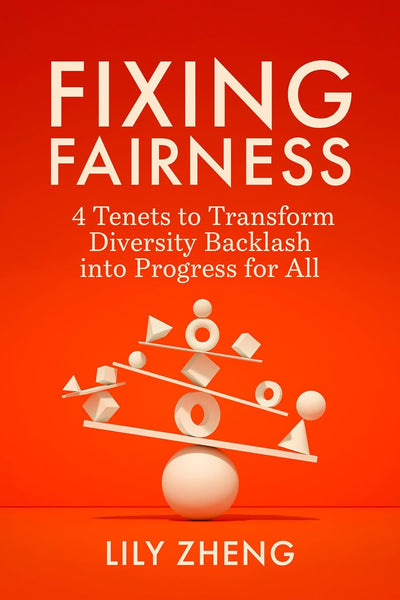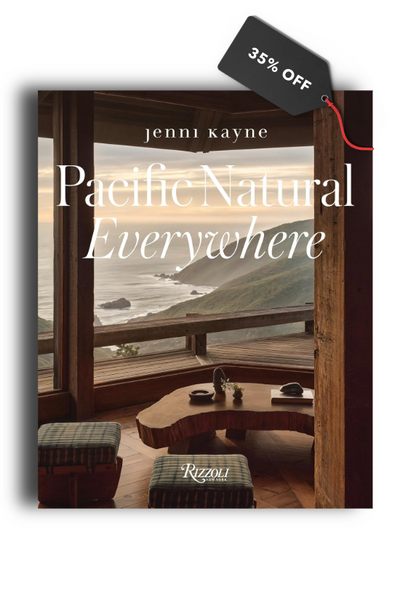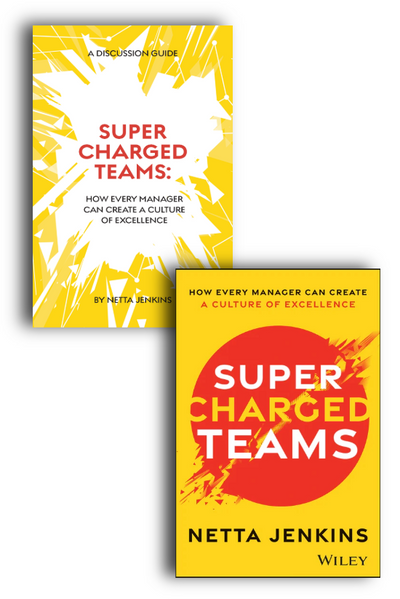You Can’t Have Your Cake and Eat It To: The Perils of Hustle Culture
Hustle culture is widespread everywhere, from Accra's marketplace to New York City's corporate offices. Rachel Laryea dissects that culture, looking at how it manifests in different communities and countries, the harm it inflicts on all of us—but on historically marginalized communities in particular—and how "pushback and disruption of the system can intervene in and refashion the system itself."
Within the Black community, many struggle or refuse to identify as a capitalist because of the moral and ethical implications attached to the taboo title.
Despite this, many still intentionally practice the behaviors of capitalism. Viral terms like hustle culture, the soft life (a wellness initiative that rejects the hustle), and Black Girl Luxury aspire to rebrand our capitalistic activities. We’ve created filtered ways to talk around—and mask—the enduring fear of what it may reveal about us if we call our behaviors what they really are. Why is that?
If you look up the word hustle in the Oxford Advanced Learner’s Dictionary, you’ll find the definition is “to make somebody move quickly by pushing them in a rough aggressive way,” usually with intent to sell or obtain something.1 However, the meaning and connotation of the word have shifted over time. In the late nineteenth and early twentieth centuries, hustle referred to “gumption” or “hard work” but was associated with illegal activities such as sex work, stealing, and scamming.2 As the twentieth century progressed, hustling became associated with Blackness and how Black Americans in large numbers secured the means to survive in the face of economic hardship and racism.3 From the 1990s into the early 2000s, Black rappers reappropriated the word and made the practice culturally cool. It became a fixture of Black life, especially for Black men, who claimed that hustle culture is a requirement for success.4
Cue Rick Ross. His 2006 record “Hustlin’” and the official music video put Black hustling on full display. At the start of the video, upbeat Latin music plays in the background as bikini-clad women walk around a vibrant and colorful downtown Miami along Ocean Drive. The pristine boardwalk, beautiful skyline, and massive cruise boats set the backdrop. Ross’s husky voice overlays the visual and describes the scene as a “playboy’s paradise” filled with “pretty girls and fast cars.”5 But we soon learn that Ross’s Miami is not the one we’re introduced to at the start of the video. The music switches to a harder, dramatic beat, and the lively colors that animated all the people and objects in the video turn to shades of brown as we watch Ross in a white BMW cross over to his Miami in Dade County—where the hustle happens.
As he crosses the literal railroad tracks, we enter what looks like a fraught Black community. A Black woman aggressively sells water bottles in the street as cars drive by, while another woman sells produce to passersby from the back of a fully stocked van. As Ross drives around town, we see Black hustling personified: Young boys sell M&M’s on street corners, men pull money out of their shoes to make undisclosed business transactions, and the assumed manager at the car wash is seen both shining and swapping cars to customers. We catch sight of a male co-owned mobile perfume shop in the middle of a live demo. One of the men is propped in the sunroof of the car with his product on display around him as he gives the pitch. The other energetic entrepreneur sprays fragrance on the wrist of a curious customer. Their business strategy proves successful as we then see the entrepreneur and customer exchange a perfume box for cash.
With every location change, as Ross makes his way around his Miami, we see evidence of micro markets where business transactions are conducted and cash is exchanged. What is purchased isn’t always clear. But the hustle portrayed runs the gamut from car buying, selling, and swapping to merchandise and fashion. At one point, Ross buys a pair of pressed navy jeans off the street that he slings over his shoulder while walking and rapping. Ross’s primary role in the video is to patronize his community of hustlers—no hustle is too small for recognition. Everyone, from children to elders, visually embodies the chorus of Ross’s track, “Every day I’m hustlin’. ”
The video argues there’s pride in the hustle and the ingenuity required to build a profitable business with limited resources. But more important, the implied need to survive by any means necessary is what drives the entrepreneurial creativity and innovation. When we strip away the cultural coolness and glorification associated with hustle culture today, we see clearly that creating markets to gain access to money, and using that capital to create economic security, is the crux of the hustle.
It’s also worth noting that as hustle became fully absorbed into the mainstream lexicon and was no longer a pejorative term associated with people of color—like anything popular and Black—white America appropriated the term and the idea, renaming it gig culture and the gig economy. A gig is now interchangeable with a hustle.
Sizing the growing global gig economy of today contextualizes just how pressing an issue economic security is within capitalism. According to Forbes, in 2023 the market size of the gig economy grew by 17 percent to approximately $455 billion.6 By 2027, gig workers will account for 50 percent of the U.S. workforce alone.7 And studies estimate that there will be 79.6 million gig workers by 2025 and 90.1 million by 2028.8 We also know that 88 percent of the global gig economy’s gross volume derives from ridesharing and assetsharing platforms like Uber and Airbnb, respectively.9 These digital platforms are sustained by three key roles: the provider, consumer, and enabler. The provider produces a service (physical or virtual labor) that the consumer buys, and that transaction is permitted through the digital infrastructure the enabler creates.
Unsurprisingly, the supply of labor is largely concentrated within the Global South (a term that refers broadly to the regions of Africa, Asia, Latin America, and Oceania that are perceived as “underdeveloped,” where providers have a greater reliance on gig work to combat enduring structures of economic precarity.10 If we take Ghana as a case study, the labor force in the country was approximately 11 million people ages twentyfive and older as of 2022.11 In that same year, close to 7.5 million people remained employed throughout the year, leaving 3.5 million people moving in and out of short-term employment (i.e., the gig economy).12 Why does this matter? Some quick math proves that 32 percent (and growing!) of Ghana’s entire labor force is hustling to make ends meet within capitalism. A day in the life of a gig worker can look like driving Uber by daybreak, washing cars by midday, and selling electronics by night.
But when it comes to the hustle, location matters. The look and feel of hustle culture is different depending on location and indicates the level of privilege people have access to within the space they occupy. Hustling in the streets of Miami-Dade County is a different experience from hustling in the marketplace of Accra or in the corporate offices of New York City. Those who hustle in the street or in the office (or anywhere else for that matter) can share common desires for wealth accumulation, economic security, and greater opportunities in life, but the context through which they hustle matters. For some, hustling is positioned as a choice, albeit with costs, whereas for others, hustling is the sole means for survival.
One of my research trips to Ghana revealed what the hustle to survive can look like in the lives of locals. Heading home to my Airbnb in East Legon after a long day of participant observation at a social enterprise company, I booked an Uber ride from the city’s A&C Mall. My driver, Kofi, was already on-site waiting for a ride request in the parking lot, and we quickly found each other and were off for the twenty-minute ride.
The well-kept black Toyota Camry he was driving was more luxurious than the Uber rides I’d grown accustomed to. King Promise, a Ghanaian singer-songwriter, was singing through the speakers; the windows were rolled up; and the air conditioner was on—a practice many Uber drivers in Ghana avoid because it wastefully burns their fuel. I caught Kofi catching a glimpse of me through his rearview mirror. I smiled, and he took that as an invitation for conversation.
I expected some small talk, but he got straight to the point. “Madame, if you need any charger for your phone, I have, so you just let me know please,” he said while gesturing toward a plastic container in the passenger seat filled with Android and Apple chargers, HDMI cords, SIM cards, and other gadgets. “I’m alri . . . ,” I began but stopped midsentence as he pitched me his collection of “fine” pillows, bedsheets, roll-on deodorant, and handkerchiefs packaged neatly in his trunk, should I be interested. While I didn’t buy any Avon deodorant or knock-off Ralph Lauren bedsheets when he dropped me off, for the remainder of my stay I did occasionally purchase the private driving services that he offered on the Uber platform, which was more lucrative for him and more convenient for me. Kofi’s hustle in the Ghanaian market is reflective of the kind of imagination it takes to secure capital in the gig economy, especially as Black and African people.
Hustle culture has its grip on corporate America too, and only in recent years have corporations begun to promote messages about work-life balance to their employees. On the flip side, in an era of grind culture grinding us down to the bone, a growing number of professionals emphasize the need to cancel hustle culture to enhance both business productivity and employee satisfaction. However, prioritizing work-life balance is nowhere near normalized. And until it is, the toxicity of hustle culture in the workplace continues to ravage the physical, emotional, and mental well-being of industry professionals.
Sayings like “Hustle harder” and “Don’t stop when you’re tired. Stop when you’re done” are plastered on office walls, furniture, and random paraphernalia to inspire workers to stay at work.13 And the sobering truth is that the white-ification of hustle culture evidenced through these glorified yet exploitative labor practices make it harder for all of us—regardless of race—to get ahead.14 As writer Erin Griffith suggests, our system is broken and to reap maximum benefits from it, you must sacrifice yourself totally.15 That sacrifice creates the perception of ambition and success. “In the new work culture, enduring or even merely liking one’s job is not enough. Workers should love what they do, and then promote that love on social media, thus fusing their identities to that of their employers,” writes Griffith in her New York Times article “Why Are Young People Pretending to Love Work?”16
To counteract the harm of racialized capitalism, people like Tricia Hersey, founder of Nap Ministry and author of Rest Is Resistance, are reclaiming ownership of their mind and body through intentional restfulness. It’s a defensive response to an economic system “created on plantations during chattel slavery,” Hersey notes, and in the contemporary moment is “driving the entire globe to exhaustion and a deep disconnection with our bodies and minds today.”17 Hersey makes clear that the mission of her organization is about much more than evangelizing the need for people to take naps:
My rest as a Black woman in America suffering from generational exhaustion and racial trauma always was a political refusal and social justice uprising within my body. I took to rest and naps and slowing down as a way to save my life, resist the systems telling me to do more and most importantly as a remembrance to my Ancestors who had their DreamSpace stolen from them. This is about more than naps. … It is about a deep unraveling from white supremacy and capitalism.18
Hersey’s “rest as resistance” and “rest as reparations” framework is a guide on how to “deprogram, decolonize, and unravel ourselves from the wreckage of capitalism” we are entangled in today.19 The chronic anxiety, panic attacks, and insomnia I’ve endured on account of the pressures of capitalism make Hersey’s invitation to intentional restfulness hard to ignore. To be Black and mindful about the need to proactively rest and treat our bodies like the “sites of liberation, knowledge, and invention” that they are, is both an interruption to the grind of capitalism and an invitation for us to reimagine how to operate in but not of capitalism.20 A new collective orientation to, and engagement with, capitalism changes the version of capitalism we experience.
Black Capitalism, which accounts for restfulness, is distinct from our shared experience of the kind of capitalism Hersey shepherds us away from. If “rest pushes back and disrupts a system that views human bodies as a tool for production and labor,” as Hersey claims, then that pushback and disruption of the system can intervene in and refashion the system itself.21 The blueprint for the more inclusive version of capitalism we can create together recognizes the humanity of people first and combats the racial and economic inequity the capitalism we know today thrives on.
Adapted from Black Capitalists: A Blueprint for What Is Possible by Rachel Laryea, PhD. Copyright © 2025 by Black Capitalism, LLC. All rights reserved.
About the Author
After cutting her teeth on Wall Street at Goldman Sachs, Dr. Rachel Laryea left to pursue a dual PhD in African American studies and sociocultural anthropology at Yale University. Her ethnographic research aims to understand nuanced forms of Black participation in capitalist economies. Rachel has held appointments at NYU Stern Business School and is currently a Wealth Management researcher at JPMorganChase. Prior to her current role, Rachel was a racial equity investment strategist, supporting the strategic implementation of the JPMorganChase $30 billion Racial Equity Commitment in service of closing the racial wealth gap for Black, Latino, and Hispanic communities. Rachel is also the founder and CEO of Kelewele, a plantain-inspired food startup based in Brooklyn, New York.








